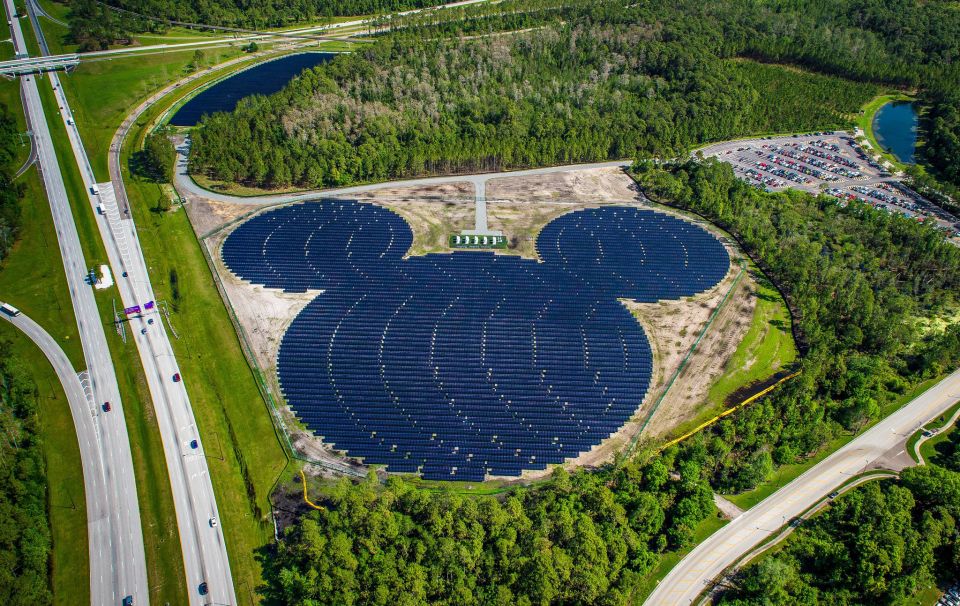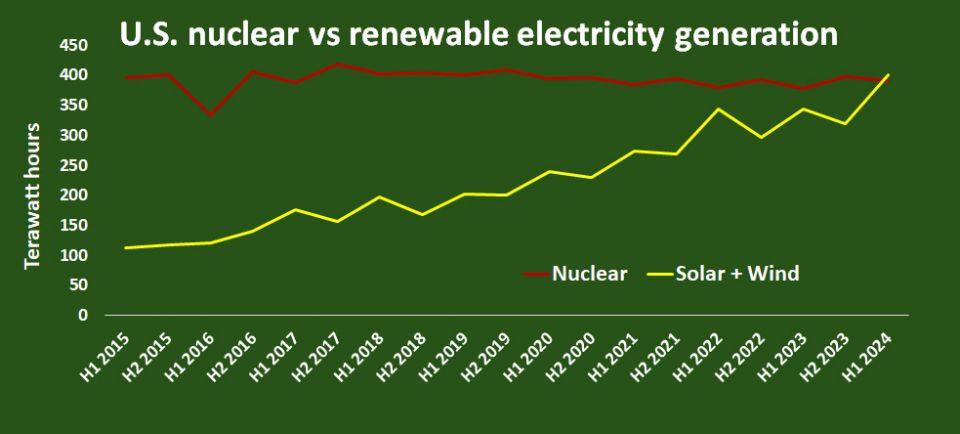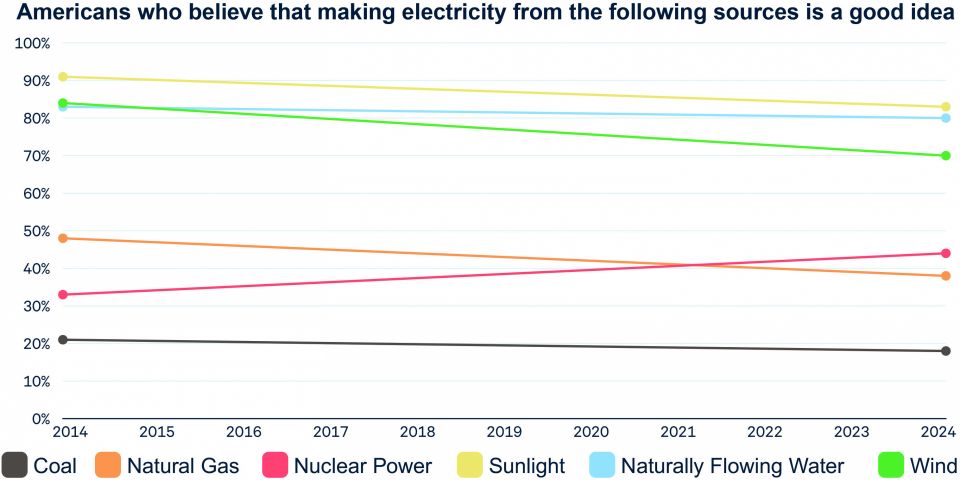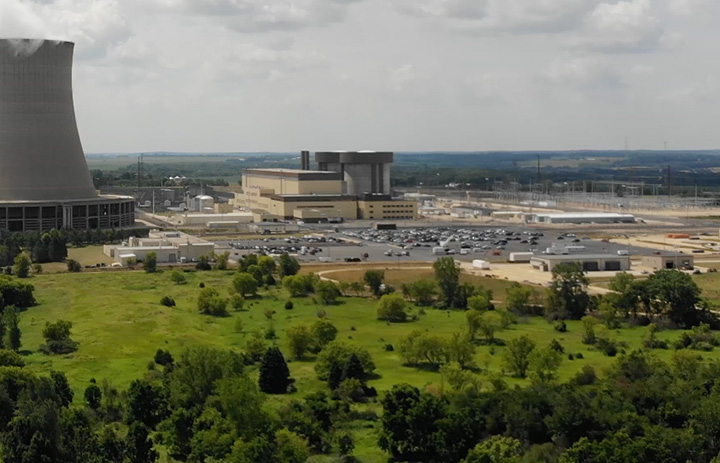The 2025 Nuclear News Energy Quiz
Are you an energy genius? It’s hard to tell whether or not Americans are really aware of the energy that controls our lives, so the following energy quiz should be revealing. The answers are revealed as you take the quiz. Most answers can be found in the pages of the 2024 issues of Nuclear News—so if you’ve been a diligent NN reader you should do fine!
Scoring: Out of 20 questions, 0–5 correct answers means you may need to read up on energy so you’re not at the mercy of others; 6–10 correct answers is a good passing grade (I don’t curve); 11–15 means you’re energy literate; 16–19 means you should be advising Congress; 20 correct answers suggests you’re Mr. Spock reincarnated.
1. What is the fastest growing energy source in the world?
Correct!
Incorrect! The correct answer is oil.
2. Why does the U.S. Department of Defense want a small nuclear reactor as soon as possible?
Correct! to reduce casualties in war zones, since attacks on diesel truck convoys accounted for about half of U.S. casualties in Afghanistan and Iraq.
Incorrect! The correct answer is to reduce casualties in war zones, since attacks on diesel truck convoys accounted for about half of U.S. casualties in Afghanistan and Iraq.
3. What energy source can produce 656 billion kilowatt-hours with the least amount of steel?
Correct!
Incorrect! The correct answer is natural gas.
4. The United States has about 200,000 miles of pipelines carrying petroleum products. About how many miles are over 100 years old?
Correct! While not an overwhelming number, over 1,000 miles of pipeline date from before 1970.
Incorrect! The correct answer is about 2,000 miles, but over half date from before 1970.
5. Which sector of America’s infrastructure has the best grade from the American Society of Civil Engineers?
Correct! Rail has a grade of B, the highest of any sector.
Incorrect! The correct answer is rail, with a grade of B, the highest of any sector..
6. From 1990 to 2012, non-weather-related grid outages barely increased from just under 20 events per year to just over 20 events per year. At the same time, weather-related grid outages increased from under 10 events per year to over:
Correct!
Incorrect! The correct answer is over 100 events per year.
7. Oil and gas drill rigs can now pick themselves up and walk to another site:
Correct! the Patterson-UTI rig is such a one.
Incorrect! The correct answer is true, and the Patterson-UTI rig is such a one.
8. According to the new Lazard cost analysis, the indirect cost of firming, or backing up, renewable energy systems on average increases the cost of that energy by about:
Correct! 100 percent on average, although it depends on where you are in the country.
Incorrect! The correct answer is 100 percent on average, although it depends on where you are in the country.
9. What is the average mortality rate in the world, in deaths per trillion kilowatt-hours produced, of wind turbines?
Correct!
Incorrect! The correct answer is 150.
10. What is the average mortality rate, in deaths per trillion kilowatt-hours produced, of nuclear?
Correct! Although this is only correct if you use the LNT number of 4,000 deaths from Chernobyl, but only about 0.1 if you use the actual number of 56 deaths for Chernobyl, so A, B, or C is acceptable.
Incorrect! The correct answer is 90 if you use the LNT number of 4,000 deaths from Chernobyl, but only about 0.1 if you use the actual number of 56 deaths for Chernobyl, so A, B, or C is acceptable.
11. How many fully electric vehicles (or hydrogen equivalents) will it take at the least to reduce petroleum use in America by 90 percent by 2040?
Correct! This is assuming the present annual rate of 15 million new internal combustion engines drops off soon.
Incorrect! The correct answer is 300 million, assuming the present annual rate of 15 million new internal combustion engines drops off soon.
12. How many fully electric vehicles do we have today in America?
Correct!
Incorrect! The correct answer is 3.3 million.
13. Which state has the poorest wind resources for energy production using onshore wind turbines?
Correct! Making emplacement of wind turbines there essentially a fool’s errand.
Incorrect! The correct answer is Georgia, making emplacement of wind turbines there essentially a fool’s errand.
14. Obtaining sufficient supplies of which mineral/metal poses the largest hurdle to decarbonizing the world’s energy mix?
Correct! Copper is far and away the biggest hurdle.
Incorrect! The correct answer is copper, far and away the biggest hurdle.
15. According to the latest UN Economic Commission for Europe report, which energy source has the lowest life cycle impact on human health and the environment in total?
Correct! Nice to see it finally acknowledged by the United Nations.
Incorrect! The correct answer is nuclear—nice to see it finally acknowledged by the United Nations.
16. About how much energy does it take to lift someone up out of poverty?
Correct!
Incorrect! The correct answer is 3,000 kWh/year.
17. How much electricity will the world be using in 2050, at the least?
Correct!
Incorrect! The correct answer is 40 trillion kWh/year.
18. Which country has a deep geological nuclear waste repository in a host rock of salt?
Correct! The Waste Isolation Pilot Plant was designed and built for all nuclear waste and later was narrowed to transuranic waste for mainly political reasons.
Incorrect! The correct answer is the United States—the Waste Isolation Pilot Plant was designed and built for all nuclear waste and later was narrowed to transuranic waste for mainly political reasons.
19. Over the life of an average car that gets 30 miles per gallon, the cost of gasoline will be about $20,000. Over the same lifespan, about how much will the electricity cost to run a fully electric vehicle?
Correct!
Incorrect! The correct answer is $5,000.
20. In the event that the world does not decarbonize its energy production sufficiently by 2050 to mitigate the worst of global warming, what is our most plausible Plan B?
Correct!
Incorrect! The correct answer is solar geoengineering.
Have a wonderful and happy 2025!
James Conca is a scientist in the field of earth and environmental sciences specializing in geologic disposal of nuclear waste, energy-related research, planetary surface processes, radiobiology and shielding for space colonies, and subsurface transport and environmental cleanup of heavy metals.




.png)



